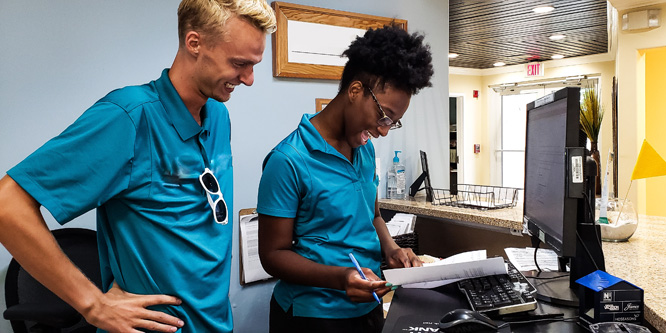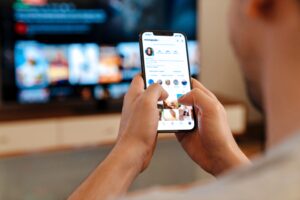
Photo: @beachbumledford via Twenty20
June 22, 2020
How to hire people who do not look like you
Through a special arrangement, presented here for discussion is a summary of a current article from the Retail Doctor’s blog.
Why should you hire people who do not look like you? Because while it is human to hire people with similar backgrounds, it can be based on unintentional bias.
Further, making shoppers feel welcome in your store starts with the people you choose to hire. When people see themselves in your marketing and on your salesfloor, they feel safe and included.
How to hire people who don’t look like you:
- Advertise for jobs in new markets. Go to college career centers and explain you are looking to represent your local area. Get your Chamber or Downtown Association involved to end racial bias.
- Get some bias training. Be open to the idea we all have these inclinations or prejudices for or against people different than us.
- Encourage online applications. One of the biggest sticklers is when a part-timer handles a walk-in applicant. Later, when asked who turned in the application, the part-timer says, “Yes, they didn’t look like a fit.”
- Have the same requirements for everyone.
- Monitor the pictures used in marketing materials. Project an image of your entire community, not just you.
- Choose your philanthropic partners with an eye for mirroring your community and the goals of inclusion.
- Go beyond just selecting products you like. Learn each vendor’s story and how their mission and initiatives fit into your inclusive world.
You can have a meeting where you tell your crew that you’ve been thinking about the harm racism has caused in our society and tell them you are going to make an extra effort to hire people not like yourself.
Behavior training with role-playing can also help your crew practice not passing judgments. Many times they don’t even realize they are passing these judgments unless a conversation is had and training is put in place.
It is up to each of us to try to understand everyone better, but particularly those who have a different skin color. It is not their job to educate us; it is ours to educate ourselves.
Discussion Questions
DISCUSSION QUESTION: What hurdles prevent stores from hiring more diverse staff? What advice would you have about reducing any implicit biases managers or staff may have about applicants or customers different than themselves?
Poll
BrainTrust
Neil Saunders
Managing Director, GlobalData
Steve Montgomery
President, b2b Solutions, LLC
Recent Discussions







The only way to reduce bias in hiring practice is to take intentional steps to do so: training, review, more training, etc. That has to start at the top with expectations clearly outlined throughout the organization. It’s not a one-and-done process, but requires ongoing support and reinforcement. As with any change, it will take time.
I don’t know how to take this article. I believe you should always hire the best person for the job. The expectations should come from the company’s mission statement making their stand on diversity and from a company being about people first. I do not want to be hired to fill a quota – I want to be hired because I am the right person for the job and by chance I just happen to be a minority.
This is a very tough question! In theory, everyone should hire the very best person for the job but there are sometimes biases that creep in. How do you get around it? Blind recruitment where names, photos, and other details are excluded from CVs during initial assessments can help. Recruitment using a panel of people is useful, so long as that panel is diverse to begin with. Ensuring that you assess a wide range of skills – intellectual, emotional, and so forth – is also important.
A company culture of openness and empowerment also helps. In our own firm, people are encouraged to speak up, contribute, and challenge. This encourages us all to look for people who are different and interesting – because they stimulate thinking – rather than those that just fit in with who and what we already have.
It is 1953. My uncle just got back from Korea. He applied for a job at Hammacher Schlemmer. They didn’t take his application. A friend told him “Joe, your name is Italian. Apply again and change it.” He applied as “Anderson” and got the job.
Bob’s recommendations are all exactly what we should all be doing. Sadly we need to. But until we get to the underlying issues, like my uncle faced in 1953, we will never solve the problem. Today, Uncle Joe would not have to use a different last name to apply for the job, but if he were of a particular skin color or sexual orientation he still may have a problem.
Unintentional bias is rampant in society. When looking at applications look at the key criteria you need (e.g., schedule availability, experience, etc.) and ensure there is as much diversity in that group of applicants as possible.
The good news is for most people bias is not intentional. The bad news is because it is not, they are not aware they have a bias. As Jeff stated the way to correct it is through taking intentional actions.
I think Bob’s point was focused around opportunity, not whether we’re hiring the best for the job. Almost every position has millions of people who can do it – and do it well. Typically our lens ends up sorting out people automatically. We see fewer hires that look different because we don’t look in places where they are — we look where we are instead. For retail stores themselves, hiring has different challenges as walk-ins are more frequent and retail turnover is notorious, so demand dictates taking the easy route of seeking people where you found them last time. This is not an easy problem to solve. Starting with an open view towards hiring, measuring if you’re actually hiring diversely and then assembling a plan of action to hire across the board – so your candidate pools are diverse — are good first steps.
Ananda, if there is diversity (for example in large cities) is it right to hire a minority even if that is not the person who is the most qualified for the job, and then six months later you have to re-post the job because they were not the right fit for the job or the company? This is a slippery slope and I will reiterate I would not like to be hired just because I am a minority to fill a quota for a company or department. Please don’t misunderstand me – I think all the intentions in the above statements are good, but if there is a lack of diversity, that needs to be rooted out first before any real change can happen.
No one is saying hiring someone who is not qualified. In the original post I did not say that either or promote the idea. It was that retailers historically hire people who look like themselves because they don’t try to diversify.
Hi Bob, I understand your point that companies need to diversify, but some companies’ pendulum swings too far the other way (to force diversity). That is not right either, but unfortunately it happens all too often.
Not advocating quotas, but I am advocating fair chance. No one wants to be the token minority. But Richard, as you know, hiring the “best” is very subjective. You spoke of “fit” and best fit is challenging for even the most open minded. The concept of color-blind is not enough as the minority is automatically at a disadvantage when being considered for a position, regardless of their skills. So actively engaging in making sure candidate pools are diverse is a good right step, allowing for the best selection but not ignoring that some folks are different. Agree that this is something that starts with rooting out the lack of diversity, a centuries long undertaking … but the change has to happen at the same time.
Yes sir, you are correct. Thank you for your response.
If diversity is the goal, then you need to measure it and be accountable as an organization that you are consciously creating a “diverse culture.” This goes beyond recruiting or hiring practices. This is about consciously creating “equity” which will require an investment and then moving to “justice” which means fixing the system to offer equal access to tools and opportunities.